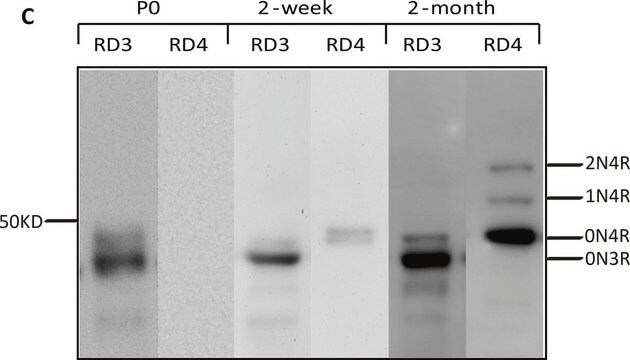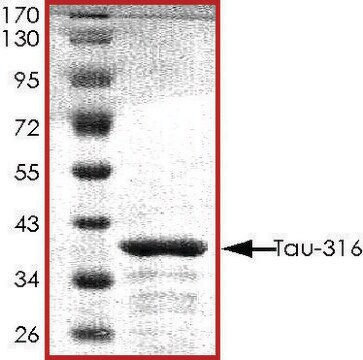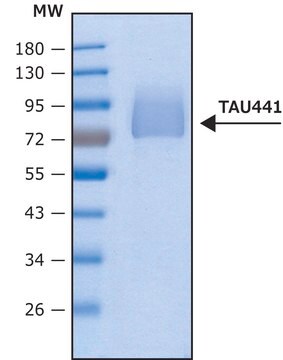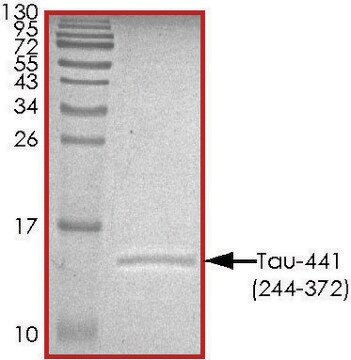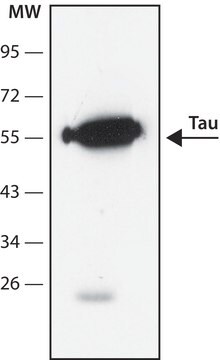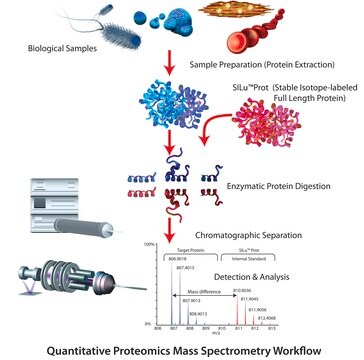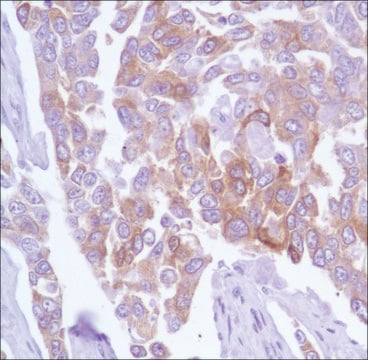Kluczowe dokumenty
T7951
Tau Protein Ladder, 6 isoforms human
recombinant, expressed in E. coli, ≥90% (SDS-PAGE), buffered aqueous glycerol solution
About This Item
Polecane produkty
pochodzenie biologiczne
human
Poziom jakości
rekombinowane
expressed in E. coli
Próba
≥90% (SDS-PAGE)
Formularz
buffered aqueous glycerol solution
masa cząsteczkowa
36800
39700
40000
42600
42900
45900
skład
dodecyl sulphate sodium salt, 1-5%
glycerine, 20-30%
mercaptoethanol, 10-20%
warunki przechowywania
(Tightly closed. Keep in a well-ventilated place. Keep locked up or in an area accessible only
to qualified or authorized persons)
metody
immunoelectrophoresis: 10-20 μL using recombinant Tau protein marker
western blot: 2-5 μL using recombinant Tau protein marker
numer dostępu UniProt
Warunki transportu
dry ice
temp. przechowywania
−20°C
informacje o genach
human ... MAPT(4137)
Opis ogólny
Tau gene, spanning 100 kb with 16 exons, is mapped to human chromosome 17q21. The six alternative splice variants of protein ranging in size from 352-441 amino acids have been identified in human adult brain. Tau is a member of the microtubule-associated protein (MAP) family. It is predominantly expressed in neurons.
Zastosowanie
Działania biochem./fizjol.
Opakowanie
Charakterystyka techniczna
Postać fizyczna
produkt powiązany
przeciwciało
Hasło ostrzegawcze
Danger
Zwroty wskazujące rodzaj zagrożenia
Zwroty wskazujące środki ostrożności
Klasyfikacja zagrożeń
Acute Tox. 3 Dermal - Acute Tox. 4 Oral - Aquatic Chronic 3 - Eye Dam. 1 - Repr. 2 - Skin Irrit. 2 - Skin Sens. 1 - STOT RE 2 Oral
Kod klasy składowania
6.1C - Combustible, acute toxic Cat.3 / toxic compounds or compounds which causing chronic effects
Klasa zagrożenia wodnego (WGK)
WGK 3
Temperatura zapłonu (°F)
Not applicable
Temperatura zapłonu (°C)
Not applicable
Wybierz jedną z najnowszych wersji:
Masz już ten produkt?
Dokumenty związane z niedawno zakupionymi produktami zostały zamieszczone w Bibliotece dokumentów.
Klienci oglądali również te produkty
Nasz zespół naukowców ma doświadczenie we wszystkich obszarach badań, w tym w naukach przyrodniczych, materiałoznawstwie, syntezie chemicznej, chromatografii, analityce i wielu innych dziedzinach.
Skontaktuj się z zespołem ds. pomocy technicznej
